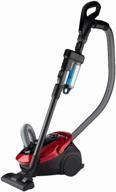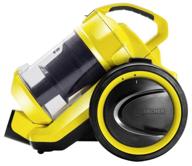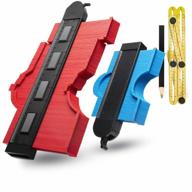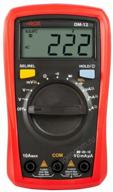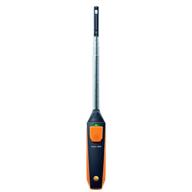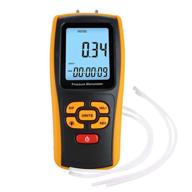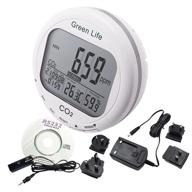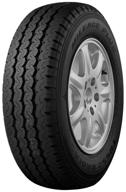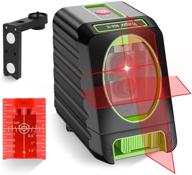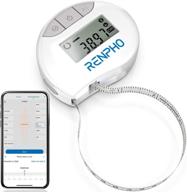Calipers - Types and Uses
Calipers are precision measuring instruments used to accurately measure linear distances between two points. They come in a variety of types, each suited for specific applications and measuring tasks.
Common Types of Calipers
- Dial Calipers - Feature a dial display for taking precise measurements. The dial shows the measurements directly in decimal inches or millimeters.
- Digital Calipers - Display measurements on an easy-to-read LCD screen. Allow quick and easy measurements.
- Vernier Calipers - Use a vernier scale and sliding jaws to take measurements. Require some calculations to read the final measurement.
- Inside Calipers - Have curved jaws used to measure internal dimensions such as the inside of a pipe or hole.
- Outside Calipers - Have straight jaws for measuring external dimensions such as the width of an object.
- Depth Calipers - Have a probe that extends to measure depths of holes, slots, and recesses.
Key Uses of Calipers
Calipers are indispensable tools for taking precise measurements in various applications including:
- Machining - Calipers are routinely used to measure the dimensions of machined parts to verify tolerances.
- Automotive - Mechanics use calipers to measure brake rotors, piston cylinders, and many other automotive components during repair and maintenance.
- Woodworking - Woodworkers rely on calipers for measuring the thickness of boards, checking diameters of dowels, and more.
- Metal Fabrication - Calipers help metal fabricators take measurements for cutting, welding, and bending metal components.
- Engineering - Engineers use calipers to measure prototypes, parts, and small objects when designing products.
- Science - Scientists in labs use calipers for collecting experimental measurements and data.
| Caliper Type | Key Uses |
|---|---|
| Dial Calipers | Precise measurements in machining, automotive repair, engineering |
| Vernier Calipers | General workshop measurements, metal fabrication |
| Inside Calipers | Measuring hole diameters, pipe IDs, recess widths |
| Depth Calipers | Measuring hole depths, slot depths, recessed areas |
With the right caliper for the application and a little practice, these invaluable tools provide the precision measurements needed in trade work, manufacturing, science, and beyond.
Similar products
Micrometers - Types and Accuracy
Micrometers are precision measuring instruments used to measure dimensions with extreme accuracy. They come in a variety of types and provide indispensable accuracy for applications requiring tight tolerances.
Common Types of Micrometers
- Outside Micrometers - For measuring the external dimensions of objects like rod diameters and bolt thicknesses.
- Inside Micrometers - Have small anvils to measure internal dimensions like holes and bores.
- Depth Micrometers - Feature a probe for measuring depths of holes, slots, and recesses.
- Tube Micrometers - Designed specifically for measuring the wall thickness of tubes and pipes.
- Specialty Micrometers - Like blade micrometers for measuring knife and saw blades.
Micrometer Accuracy
The primary factor determining the accuracy of a micrometer is its precision grade:
- Standard Grade - Accurate to 0.001 inches or 0.02 mm.
- Laboratory Grade - Accurate to 0.0001 inches or 0.002 mm.
- Inspection Grade - Accurate to 0.00005 inches or 0.001 mm.
- Premium Grade - Accurate to 0.00002 inches or 0.0005 mm.
Higher precision grades have finer lead screws and markings for greater resolution. Other factors impacting accuracy include:
- Quality of manufacturing and materials.
- Proper calibration and handling.
- Operator skill in reading measurements.
- Making measurements at consistent temperatures.
Key Uses Requiring Micrometer Accuracy
- Machining parts to tight tolerances - 0.001" or 0.01 mm is common
- Measuring prototypes and first-article inspections
- Automotive engine components - Cylinders, valves, gears
- Medical devices and equipment
- Aerospace and defense component manufacturing
- Quality control in industrial and engineering applications
| Micrometer Type | Typical Accuracy |
|---|---|
| Standard Outside Micrometer | 0.001 inches |
| Premium Grade Depth Micrometer | 0.00005 inches |
| Laboratory Grade Inside Micrometer | 0.0001 inches |
With proper use and handling, micrometers provide the extreme precision required for critical manufacturing and engineering applications.
Dial Indicators and Test Indicators
Dial indicators and test indicators are versatile precision measuring tools used to accurately measure deviations and variations in assemblies, workpieces, and machine tools.
Top products in 📏 Dimensional Measurement
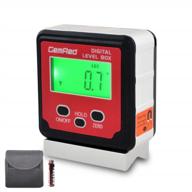

25 Review

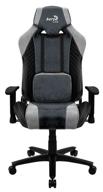

35 Review

Dial Indicators
Dial indicators, also called dial gauges, have a precise dial graduated in 0.001" or 0.01mm increments. Key features:
- Measure linear motion and repeatability of movement
- Available in fractional or metric units
- Measure up to 1" of travel
- Include mounting accessories like magnetic bases
- Used with calibration standards to verify accuracy
Another interesting products
Test Indicators
Test indicators are a specialized type of dial indicator optimized for workshop conditions. Key features:
- Robust housing withstands dirt, oil, grease
- Preloaded spindle ensures constant contact force
- Small probe tip reaches into bores, slots, and recesses
- Available with interchangeable contact points
- Readings in 0.0005" or 0.01mm increments
Typical Applications
- Align machine tool tables, beds, heads, spindles
- Check runout of spindles, bearings, and shafts
- Measure part features like diameters, slots, and hole locations
- Validate CNC machine precision after programming
- Perform quality control inspections and first article tests
| Dial/Test Indicator | Typical Uses |
|---|---|
| 1" travel dial indicator | Check alignment of machine tool components |
| Lever-actuated dial test indicator | Measure runout of bearing journals |
| Plunger dial test indicator | Measure hole location and diameter |
Offering accuracy down to 0.0005", dial indicators and test indicators are indispensable for precision metalworking, inspection, and alignment tasks.
Height Gages and Depth Gages
Height gages and depth gages are precision metrology instruments used to measure vertical distances and depths with accuracy and repeatability.
Height Gages
Height gages are versatile tools for measuring height from a base reference surface:
- Linear scale units in inches or mm with accuracies to 0.001"
- Rigid beam frame with heavy base for stability
- Scriber or dial indicator for precision measurements
- Available in digital and vernier analog styles
- Use with surface plates, V-blocks, angle plates
Depth Gages
Depth gages specifically measure depths of holes, slots, and recessed areas:
- Graduated beam with probe tip to reach into openings
- Locking collar secures depth measurement
- Dial or digital readouts in 0.001" or 0.01mm increments
- Flat base and fine probe tip sit stable in holes
- Extension rods available for deep reaches
Applications
Height and depth gages are used to inspect and validate dimensions including:
- Part heights and thicknesses
- Hole, slot, and recess depths
- Steps, gaps, and surface variations
- Quick validation checks in machining and fabrication
- Incoming inspection of raw materials and parts
| Gage Type | Typical Uses |
|---|---|
| 12" Height Gage | Measure part heights, steps and gaps |
| 2" Depth Gage | Check hole and slot depths |
| Digital Height Gage | Precision step and profile measurements |
Offering rigid beams, fine graduations, and a variety of probe configurations, height and depth gages provide reliable vertical measurement for industrial and engineering applications.
How To Choose The Right Dimensional Measurement Tool For Your Needs?
Choosing the right dimensional measurement tool for your needs can be a daunting task. Here are some factors to consider when selecting a measurement solution:
Some of the most common dimensional measurement tools include:
Each tool has its own strengths and weaknesses, and the best tool for your needs will depend on the specific application. It's important to consider all of the factors listed above and to consult with experts in the field to ensure that you choose the right tool for your needs.





